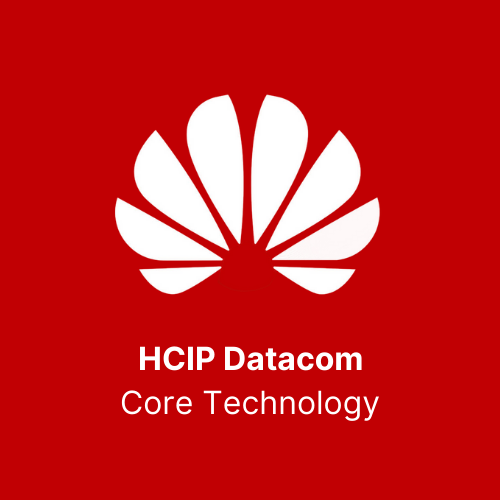
- Profissionais em geral que desejam se tornar engenheiro sênior Datacom Huawei
- Engenheiros de pré-vendas e pós-vendas em soluções de routing e switching
- Parceiros e canais de venda que desejam certificar e habilitar seus funcionários para executar serviços de instalação e implementação
- Gerentes de TI e Arquitetos em TI
- Pessoas que buscam a certificação Huawei Certified ICT Professional – HCIP-Datacom-Advanced Routing & Switching Technology
O treinamento proporciona ao aluno o conhecimento de todo o processo de encaminhamento dos pacotes de dados nos roteadores e switches Huawei.
O treinamento é composto por conteúdo teórico e prático, com execução de vários laboratórios práticos de configuração dos equipamentos.
Após a conclusão deste curso, o participante estará capacitado para:
- Entender os princípios e configurações de OSPF, IS-IS e BGP
- Implementar controle de rotas e caminho do tráfego
- Entender os princípios e configurações de RSTP/MSTP
- Entender os princípios da tecnologia de empilhamento
- Entender os princípios e configurações de multicast
- Configurar ICMPv6, NDP e endereçamento IPv6
- Compreender as tecnologias de firewall Huawei
- Configurar funcionalidades básicas de segurança nos dispositivos de rede
- Compreender as configurações básicas de confiabilidade de rede
- Descrever os protocolos comuns de gerência de rede
- Entender soluções empresariais de Datacom Huawei
- Familiaridade com as operações comuns de equipamentos Huawei
- Ou ter conhecimentos equivalentes ao treinamento HCIA-datacom
- O curso tem duração de 10 dias – 80 horas de treinamento (conduzido por instrutor)
- Online ao vivo, sendo o curso ministrado por instrutor certificado pelo fabricante, incluindo atividades teóricas e práticas.
- Introduction to Network Devices
- Overview of Network Device Framework
- Packet Processing by Network Devices
- IP Routing Basics
- IP Routing Basics
- Advanced Applications of IP Routing
- OSPF Basics
- Introduction to Dynamic Routing Protocols
- Overview of OSPF
- OSPF Working Mechanism
- Basic OSPF Configurations
- OSPF Route Calculation
- Intra-Area Route Calculation
- Introduction to LSAs
- Router-LSA
- Network-LSA
- SPF Calculation Process
- Inter-Area Route Calculation
- External Route Calculation
- Intra-Area Route Calculation
- OSPF Special Areas and Other Features
- Stub Area and Totally Stub Area
- NSSA and Totally NSSA
- Summarization of Inter-Area and External Routes
- OSPF Features
- IS-IS Implementation and Configuration
- Basic Concepts of IS-IS
- Working Mechanism of IS-IS
- Basic IS-IS Configurations
- BGP Basics
- Introduction to BGP
- Basic Concepts of BGP
- Basic BGP Configurations
- BGP Path Attributes and RRs
- BGP Path Attributes
- BGP RRs
- Preferred BGP Route Selection
- Preferred BGP Route Selection
- BGP EVPN Basics
- MP-BGP
- EVPN
- Routing Policy and Routing Control
- Routing Control Overview
- Route Control Tool
- Route Matching Tool
- Route-Policy
- Route Control Cases
- Traffic Filtering and Forwarding Path Control
- PBR
- MQC
- Traffic Filtering
- Introduction to Typical Campus Network Technologies
- Campus Network Architecture and Common Technologies
- Ethernet Switching Basics
- Wireless Access
- Network Reliability
- Network Service and Management
- Network Security
- VPN
- Multicast
- IPv6
- RSTP Implementation and Configuration
- Introduction to RSTP
- STP Review and Defects
- RSTP Overview
- Improvements Made in RSTP
- Working Mechanism of RSTP
- RSTP Configurations
- Introduction to RSTP
- MSTP Implementation and Configuration
- Introduction to MSTP
- Basic Concepts of MSTP
- Working Mechanism of MSTP
- MSTP Configurations
- Stack and CSS Features of Switches
- Overview of Stack and CSS
- Implementation of Stack
- Implementation of CSS
- Basic Configuration
- IP Multicast Basics
- Basic Concepts of Multicast
- Multicast Data Forwarding Implementation
- IGMP Implementation and Configurations
- IGMP Introduction
- Overview
- Implementation of IGMP
- IGMP Feature Introduction
- IGMP Configurations
- IGMP Introduction
- PIM Implementation and Configurations
- Introduction to PIM
- Introduction to PIM-DM
- Introduction to PM-SM
- Introduction to IPv6
- IPv6 Overview
- IPv6 Address Introduction
- IPv6 Packet Structure
- Basic IPv6 Configuration
- ICMPv6 and NDP
- ICMPv6 Introduction
- ICMPv6 Overview
- ICMPv6 Message Format
- ICMPv6 Message Types and Functions
- NDP Introduction
- ICMPv6 Introduction
- IPv6 Address Configuration
- IPv6 Address Configuration Modes
- IPv6 Stateless Address Autoconfiguration
- DHCPv6
- Implementation of IPv6 Address Autoconfiguration
- Huawei Firewall Technology
- Introduction to Firewalls
- Basic Firewall Concepts
- Basic Firewall Configurations
- Security Features of Network Devices
- Common Security Hardening Policies
- Examples for Security Hardening Policy Deployment
- Introduction to VPN Technology
- What Is VPN?
- Common VPN Technologies
- Introduction to VRF
- Basic Concepts of VRF
- Typical VRF Configuration Examples
- BFD Implementation and Configuration
- Introduction to BFD
- BFD Implementation
- BFD Application Scenarios
- Basic BFD Configurations
- VRRP Implementation and Configuration
- Introduction to VRRP
- VRRP Implementation
- Typical Application Scenarios of VRRP
- Basic VRRP Configurations
- DHCP Implementation and Configuration
- DHCP Background
- DHCP Working Mechanism and Configuration
- DHCP Relay Working Mechanism and Configuration
- Introduction to Network Management Protocols
- Development History of Network Management
- Functions of Network Management
- Categories of Network Management Protocols
- Application Scenarios of Network Management
- Large-Scale WLAN Deployment
- Large-Scale WLAN Networking Overview
- VLAN Pool
- DHCP
- Roaming
- Reliability
- NAC
- Introduction to Enterprise Datacom Solutions
- Enterprise Datacom Network Panorama
- Enterprise Datacom Network Solutions
maio
Nenhum treinamento
junho
Nenhum treinamento
julho
Nenhum treinamento
agosto
Nenhum treinamento
setembro
Nenhum treinamento
outubro
Nenhum treinamento





